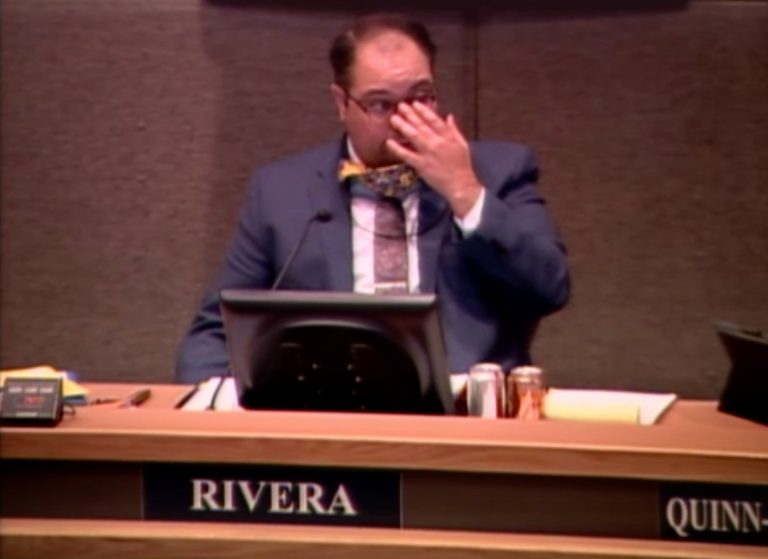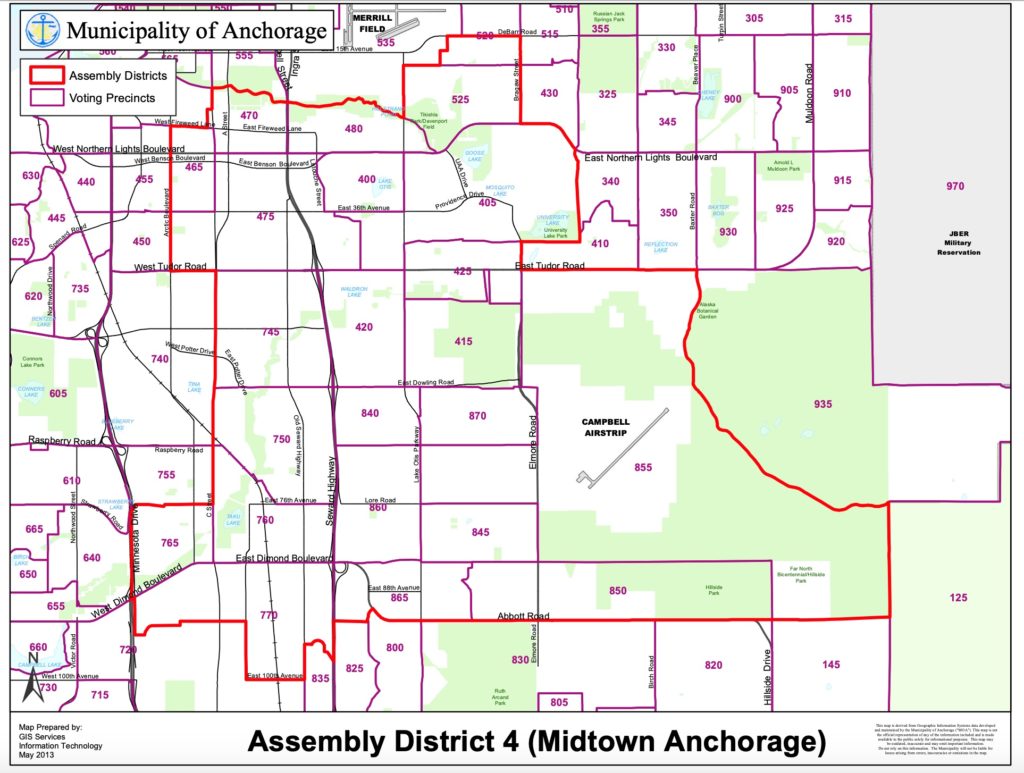Dave Bronson dashed to three campaign fundraisers in 24 hours between Dec. 29-30. He raised over $30,000 between the three events before the end of the year — cash that will help him buy signs, bumper stickers, and radio spots.
After a fundraiser in South Anchorage, attended by over 80, and an equally strong fundraiser in Chugiak, Bronson ended up in front of a fireplace, facing a camera, for a Facebook Livestream telethon fundraiser, hosted by one of his key supporters, Bernadette Wilson. The event was supposed to last an hour, but the donations kept on coming.
Candidates like Bronson, who is running for Anchorage mayor in the April 6 election, can only raise $500 from each individual donor in a calendar year, and so finishing the year strong is a strong priority for any candidate.
The third fundraiser was a first — perhaps in history: A live telethon with guests, a bell that was rung after every donation came in, and after the two-hour live event was over, and everything was tallied, Bronson had raised $17,000. The goal had only been $10,000.
Telethons are old-school devices used by charities, such as St. Jude’s Children’s Research Hospital, or the old MDA Labor Day Telethon, featuring comic Jerry Lewis. Public television also does telethons each year, as well, to support public broadcasting. But candidates using it for fundraising on Facebook, where costs were kept to zero? That’s out-of-the-box thinking.
In fact, campaign strategists may be studying how this event got pulled off so well, who made it successful, and how it can be replicated for other campaigns in Alaska and the Lower 48.
Wilson, who once had a radio talk show and who is a rising political star in her own right, brought on several guests to tell viewers their stories of how government mandates have affected their lives.
The life stories began with Paul Berger, owner of the Carousel Lounge in Spenard, which is among the dozens of establishments in Anchorage that were shut down by order of the current mayor and the former mayor Ethan Berkowitz, who resigned in disgrace.
The Carousel Lounge has been open for two years, but the establishment has been in existence since 1967. Berger described how 16 of his employees were let go due to the mayor’s shutdown policies, and there were strokes, suicides, divorces, and other horrific life events among those laid-off workers, which he blames on the shutdowns.
Brittany Tompkins told viewers about the passing of her grandfather, who had been locked in a care facility, with his family unable to visit him for months, even while employed caretakers would come and go daily. They could have all the commercial and societal interactions and then go back to work at the care facility, but the family, including her grandmother, was locked out. Brittany’s story was heartbreaking and relatable.
“We weren’t there in the final moments to advocate for him,” Tomkins said. “The solution is worse than the virus.”
Trina Johnson, who owns LaMex Restaurant on Dimond Blvd, was a guest who used her time to complete the few words of testimony that had been cut off by Assembly Chair Felix Rivera during a public testimony opportunity in December. Her restaurant had been in existence through six generations and now has a “for sale” sign on it.
https://www.facebook.com/bronsonformayor/videos/428289004963763/
The donations came in with comments that they were in honor of people’s grandchildren, or in honor of an Assembly member who has been the most outrageous or callous. One donor said her gift was in honor of “all the restaurants that have been closed down.” Another said it was “in honor of Perfect Cup,” a restaurant that had been shut down by the mayor’s edict. One donor noted hers was in honor of “Condescending Constant,” referring to Assemblyman Chris Constant.
The event drew more than one donor a minute, over 550 Facebook comments, 5,300 viewers, and ultimately over $17,000 net.
The key to the telethon’s success was that it was not as much focused on the candidate, but on the people of Anchorage who have seen their families and friends crushed by the current administration.








